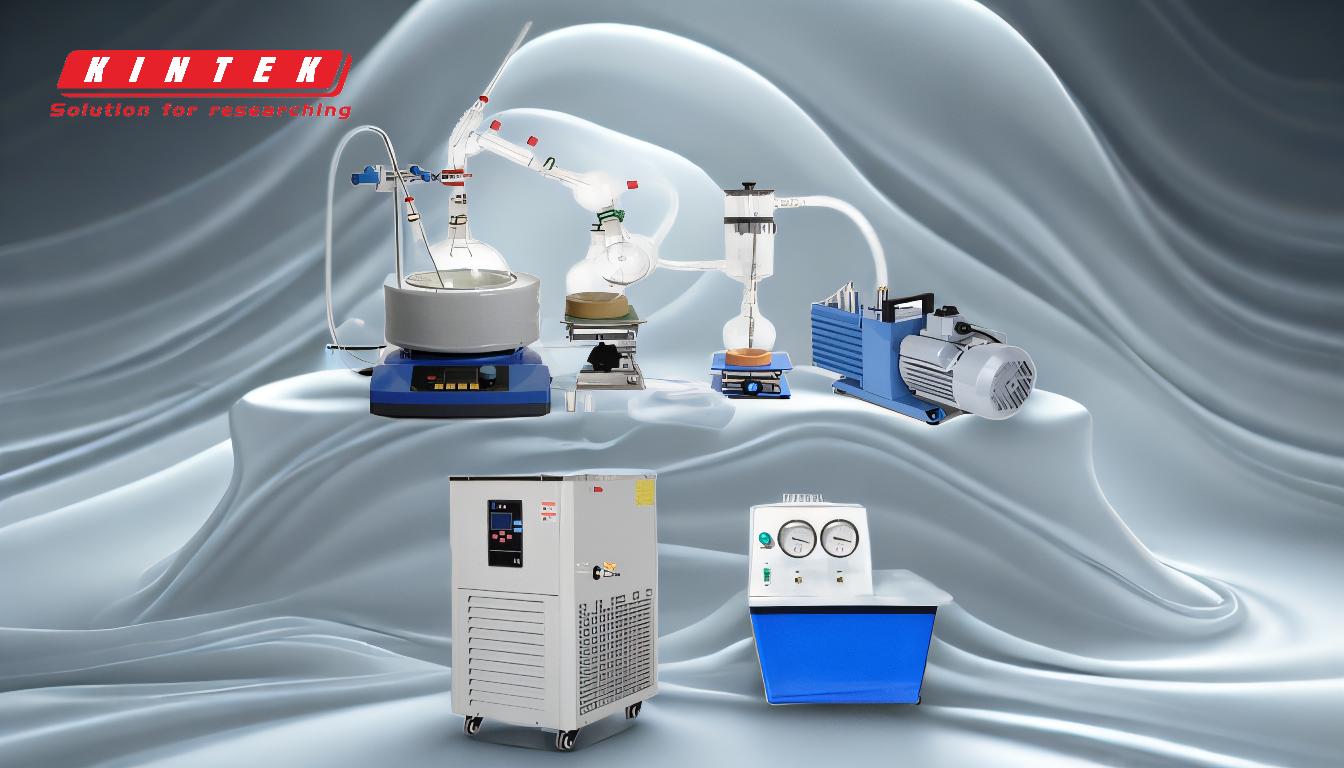Distillation and molecular distillation are both separation techniques used to purify substances, but they differ significantly in their principles, operating conditions, and applications. Traditional distillation relies on boiling point differences and gas-liquid equilibrium, while molecular distillation operates under high vacuum and low temperatures, utilizing the mean free path of molecules for separation. Molecular distillation is particularly suited for heat-sensitive materials that may decompose or oxidize at high temperatures, offering higher separation efficiency and lower energy consumption compared to conventional methods.
Key Points Explained:

-
Operating Principle:
- Traditional Distillation: Relies on the boiling point differences of substances. It operates at or above the boiling point of the mixture, where the liquid is heated to form vapor, which is then condensed back into liquid form.
- Molecular Distillation: Operates below the boiling point of the substance. It relies on the mean free path of molecules, where molecules evaporate from the surface and travel a short distance to a condensing surface without significant intermolecular collisions.
-
Pressure Conditions:
- Traditional Distillation: Typically performed at atmospheric or low pressure, depending on the boiling points of the substances.
- Molecular Distillation: Requires a high vacuum (generally less than 5 Pa) to ensure that molecules can travel freely without colliding, allowing for efficient separation.
-
Temperature:
- Traditional Distillation: Operates at higher temperatures, often close to or above the boiling points of the substances, which can lead to thermal degradation of sensitive materials.
- Molecular Distillation: Operates at much lower temperatures, below the boiling points, minimizing the risk of thermal degradation and oxidation.
-
Separation Mechanism:
- Traditional Distillation: Separation is based on the equilibrium between the liquid and vapor phases. The process involves boiling and condensation cycles.
- Molecular Distillation: Separation is based on the difference in the mean free path of molecules. Molecules evaporate from the surface and are immediately condensed on a nearby surface, ensuring a high degree of separation.
-
Energy Consumption:
- Traditional Distillation: Generally consumes more energy due to the need to heat the mixture to its boiling point and maintain the temperature throughout the process.
- Molecular Distillation: More energy-efficient due to the lower operating temperatures and the unique design of the equipment, which minimizes internal resistance and heat loss.
-
Applications:
- Traditional Distillation: Commonly used in industries such as petroleum refining, chemical manufacturing, and alcohol production, where high-temperature processing is acceptable.
- Molecular Distillation: Ideal for heat-sensitive materials such as essential oils, vitamins, and pharmaceuticals. It is also used in the purification of natural products and the concentration of bioactive compounds.
-
Equipment Design:
- Traditional Distillation: Uses distillation columns or towers with multiple stages for separation, relying on temperature gradients and surface area for efficient separation.
- Molecular Distillation: Utilizes short-path distillation equipment with a minimal distance between the evaporating and condensing surfaces, ensuring that molecules travel directly from the evaporator to the condenser without significant collisions.
-
Process Dynamics:
- Traditional Distillation: A continuous equilibrium process where the liquid and vapor phases are in constant contact, leading to repeated evaporation and condensation cycles.
- Molecular Distillation: A non-equilibrium process where molecules are separated based on their individual motion and travel distances, without the need for repeated boiling and condensation.
In summary, while both distillation and molecular distillation are used for separating substances, they differ fundamentally in their operating principles, conditions, and suitability for different types of materials. Molecular distillation offers distinct advantages for heat-sensitive and high-value materials, making it a preferred method in industries requiring high purity and minimal thermal degradation.
Summary Table:
| Aspect | Traditional Distillation | Molecular Distillation |
|---|---|---|
| Operating Principle | Relies on boiling point differences and gas-liquid equilibrium. | Uses the mean free path of molecules under high vacuum and low temperatures. |
| Pressure Conditions | Performed at atmospheric or low pressure. | Requires a high vacuum (less than 5 Pa). |
| Temperature | Operates at or above boiling points, risking thermal degradation. | Operates below boiling points, minimizing thermal degradation. |
| Separation Mechanism | Based on liquid-vapor equilibrium and repeated boiling/condensation cycles. | Based on molecular motion and direct condensation without collisions. |
| Energy Consumption | Higher energy consumption due to high temperatures. | More energy-efficient due to lower temperatures and optimized equipment design. |
| Applications | Used in petroleum refining, chemical manufacturing, and alcohol production. | Ideal for heat-sensitive materials like essential oils, vitamins, and pharmaceuticals. |
| Equipment Design | Uses distillation columns or towers with multiple stages. | Utilizes short-path distillation with minimal distance between evaporator and condenser. |
| Process Dynamics | Continuous equilibrium process with repeated evaporation and condensation. | Non-equilibrium process with direct molecular separation. |
Need help choosing the right distillation method for your application? Contact our experts today!










